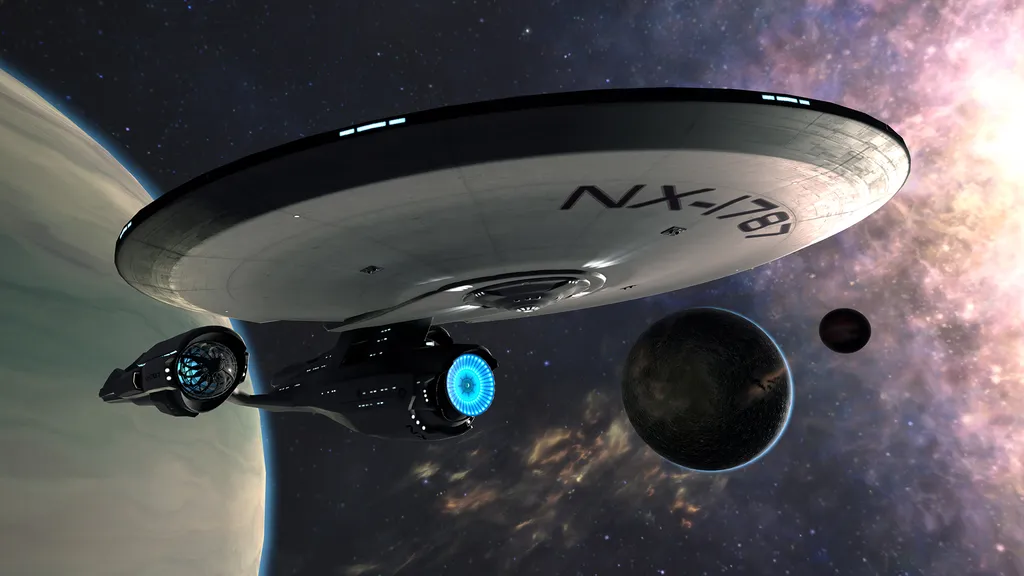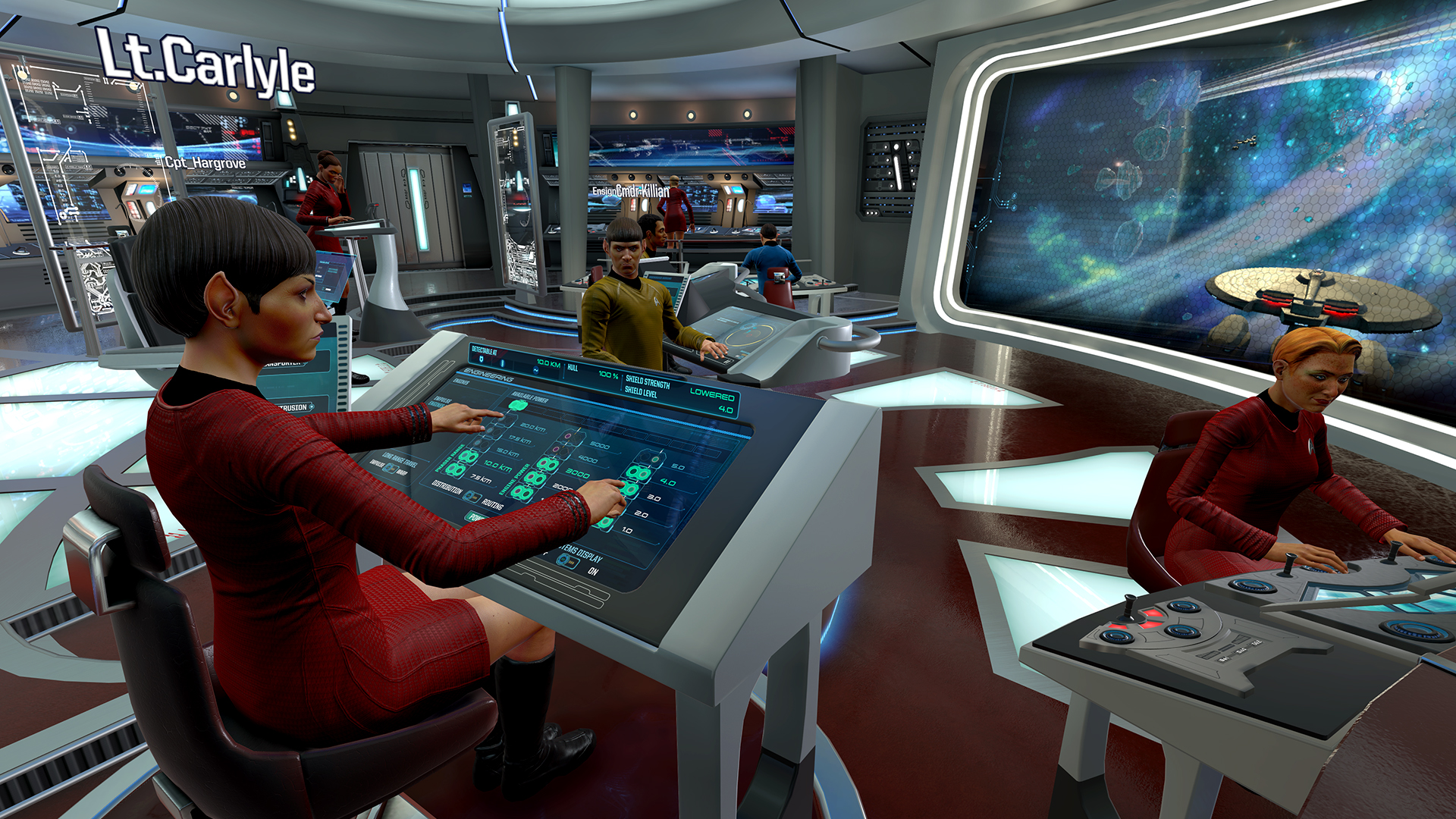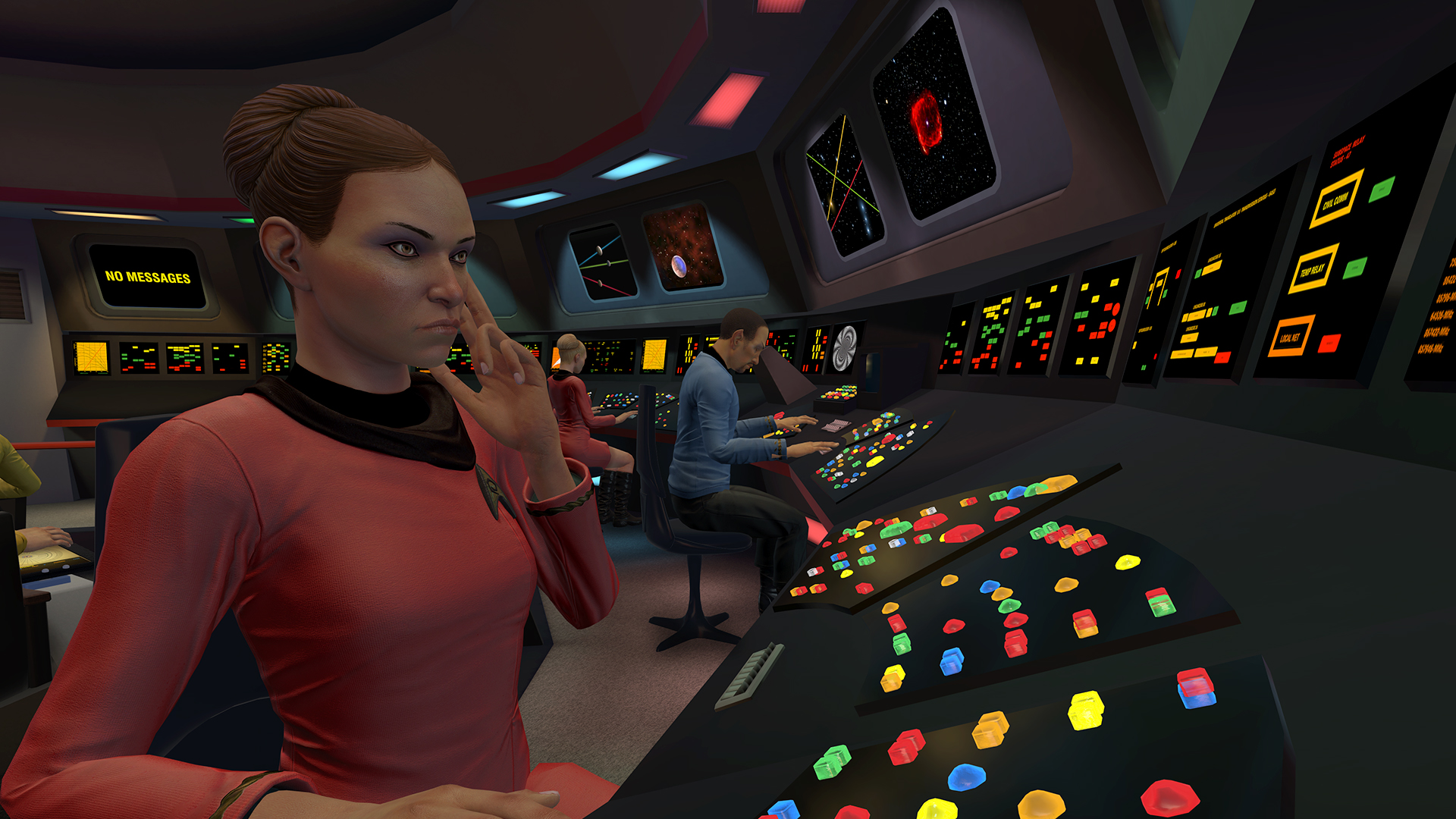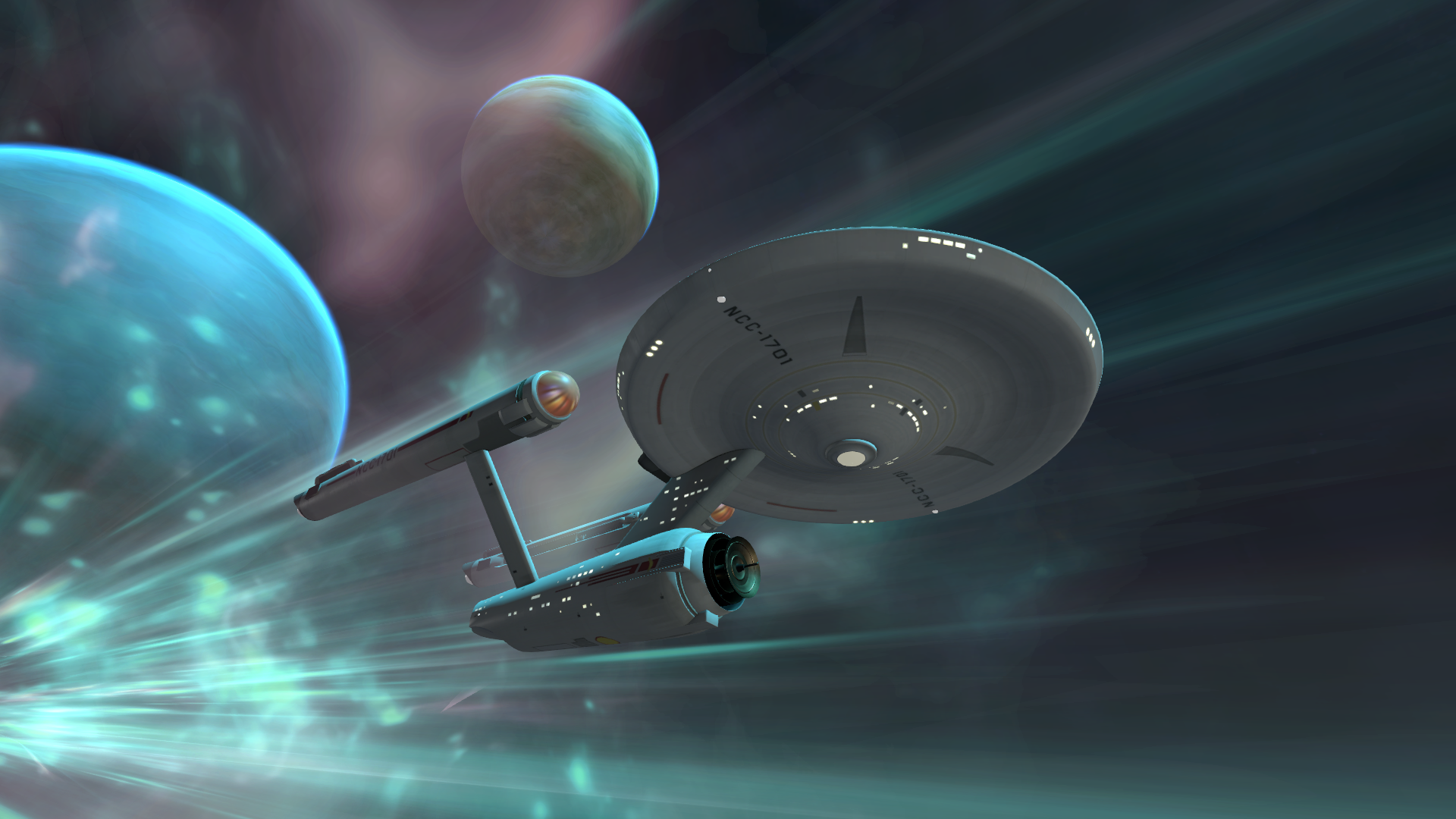We’ve written a lot about Star Trek: Bridge Crew over the last few weeks. After we got the chance to go hands-on with the game again and actually live out the fantasy of middle-aged gamers around the world by stepping aboard the original 1960s-style Starship Enterprise, we were dying to have more. As a result, Ubisoft invited us back one more time for what is likely the last preview session for the highly anticipated game before it launches.
For this new session we dove into brand new missions, including the game’s actual prologue which throws new cadets at the infamous Kobayashi Maru training exercise. The full Upload crew ran through it (saving a paltry 6 people, compared to the internal Ubisoft record of over 100) and played through another combat heavy mission after that. We even ran through content on the original Enterprise again as well.
But the real highlight of this latest demo was our opportunity to play a mission with just two human players instead of a full crew like all previous demos.
One of the biggest questions leading into the final month before the game’s launch is just how well it will work if you can’t find a full squad to roll with. Not everyone knows three other people with VR headsets (although the game’s simultaneous multiplatform release with full cross-platform multiplayer on PSVR, Rift, and Vive certainly helps) so flexibility is extremely important. We decided to emulate that sort of setup by having just two of us (myself and Editor-in-Chief Tal Blevins) play the game instead.
We pressed the Quick Match button from the front-end menu just like normal, but instead of ensuring we had four people sitting around the briefing table we queued up for a mission with only the two of us — it was designed as a primarily stealth mission this time around. Once the game loaded up I was in the captain’s chair at first with Tal at the Tactical station, in charge of weapons, shields, and scans.
With the press of the A button on the right Oculus Touch controller, I could pop up my NPC command menu. Basic functions like decreasing our signature (for boosted stealth) and raising shields were available here. This made it easy to issue essential commands quickly to my AI crew.
If I turned to look at the Engineer or Helmsman — the two empty seats — then I’d see a more specific list of commands. For example with the helmsman I could have him evade the target, pursue the target, adjust speeds, and more. The Engineer could send our repair crews for damaged systems, reroute power to different areas of the ship, and more. Out of all the roles, the Engineer is probably the best one to leave open out of the four.
Looking at any empty chair meant I could immediately jump over to that spot and take things over if necessary. Making sure the two of us filled the Tactical and Helmsman spots during intense battles was absolutely necessary and I can hardly imagine the chaos that would arise if you tried to control the entire starship solo.
Going into this last mission I was skeptical about whether or not it’d really be engaging without a bunch of other people to interact with. Half of the fun of the game to this point has been the hilarity that ensues with everyone around you frantically trying to do their job. Shouting back and forth across the ship, praising successes, and cracking jokes at your friend’s failures is what really made the experience thus far. How would it fare if we removed half of the people? Luckily it was still a lot of fun.
With half the crew size it just meant that our responsibilities each doubled. As the captain I was no longer issuing as many verbal commands and was instead communicating with NPCs via the game’s intuitive and easy-to-use menu system. I was hopping between chairs, doing two or even three roles at once. We were divvying up duties more clearly, both co-captaining the ship in a way. It felt more collaborative and cooperative in many cases.
That being said, the chaos was a bit overwhelming. What started out as a stealth mission quickly devolved into us getting surrounded and having to fight for our lives, which is incredibly hard when you’re outnumbered and at half crew size. Perhaps with a bit more experience it would have been more manageable, but as it stands, it seems like the fewer people you have the harder the game becomes. It’s a quite different feeling altogether.
Star Trek: Bridge Crew is an intense and insanely engaging cooperative VR game. Playing with a full crew of four people may be one of my favorite things I’ve done in VR so far and I’m itching to see more of the finished product. Between the newly designed Aegis, the original Enterprise, the narrative-driven campaign, and the randomized Ongoing Voyages mode, there is a lot of content here. Everything is afforded additional complexity as you adjust the team size further and peel back the layers of the game’s complex design.
Thankfully, there’s not much longer left to wait. Star Trek: Bridge Crew is set to release on May 30th for Oculus Rift with Touch, HTC Vive, and PlayStation VR (PSVR) with full cross-platform multiplayer. Will you be picking the game up at launch? Let us know in the comments below!





























